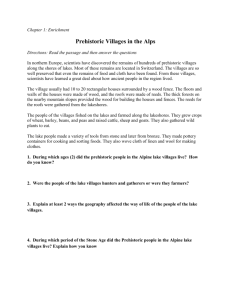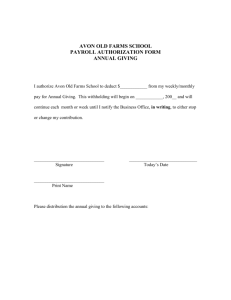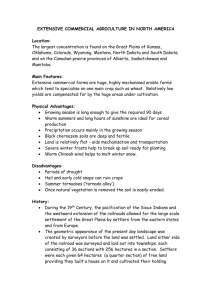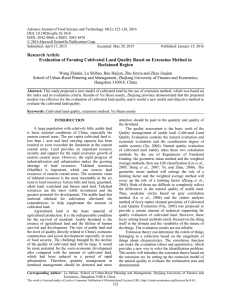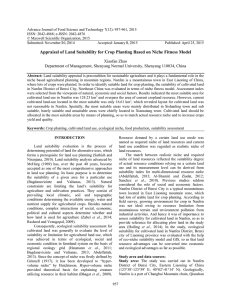Settlement Patterns in Agriculture
advertisement
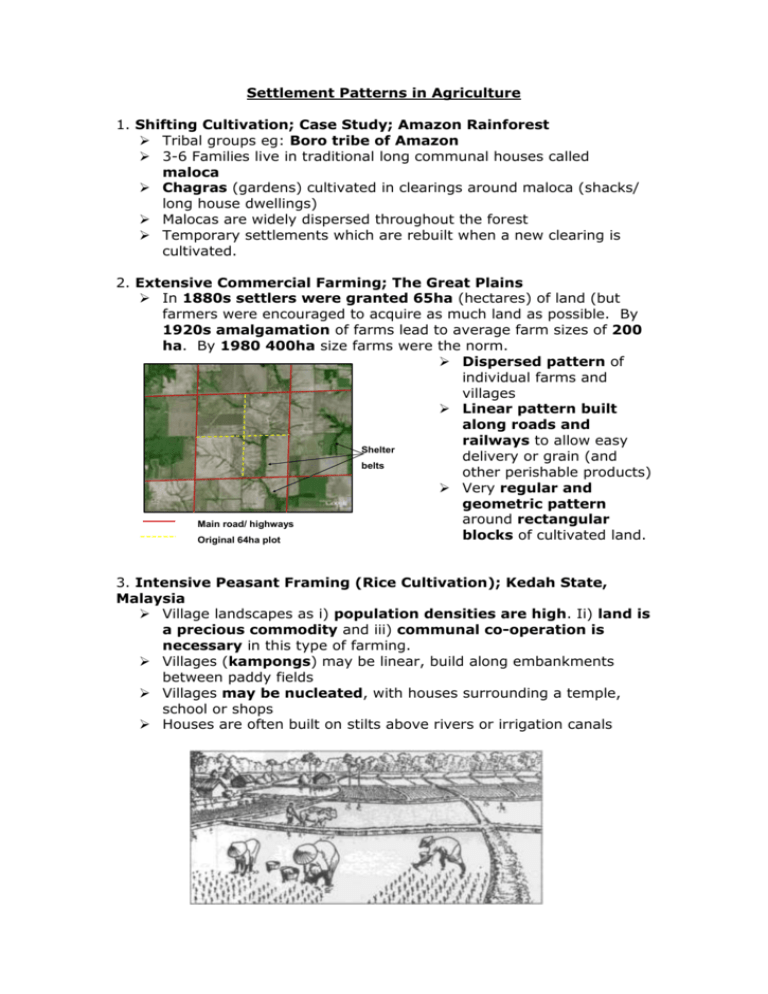
Settlement Patterns in Agriculture 1. Shifting Cultivation; Case Study; Amazon Rainforest Tribal groups eg: Boro tribe of Amazon 3-6 Families live in traditional long communal houses called maloca Chagras (gardens) cultivated in clearings around maloca (shacks/ long house dwellings) Malocas are widely dispersed throughout the forest Temporary settlements which are rebuilt when a new clearing is cultivated. 2. Extensive Commercial Farming; The Great Plains In 1880s settlers were granted 65ha (hectares) of land (but farmers were encouraged to acquire as much land as possible. By 1920s amalgamation of farms lead to average farm sizes of 200 ha. By 1980 400ha size farms were the norm. Dispersed pattern of individual farms and villages Linear pattern built along roads and railways to allow easy Shelter delivery or grain (and belts other perishable products) Very regular and geometric pattern around rectangular Main road/ highways blocks of cultivated land. Original 64ha plot 3. Intensive Peasant Framing (Rice Cultivation); Kedah State, Malaysia Village landscapes as i) population densities are high. Ii) land is a precious commodity and iii) communal co-operation is necessary in this type of farming. Villages (kampongs) may be linear, build along embankments between paddy fields Villages may be nucleated, with houses surrounding a temple, school or shops Houses are often built on stilts above rivers or irrigation canals




